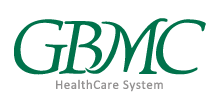A Natural History of the Progression of Stargardt Disease: Retrospective and Prospective Studies
| Status: | Completed |
|---|---|
| Conditions: | Ocular |
| Therapuetic Areas: | Ophthalmology |
| Healthy: | No |
| Age Range: | 6 - Any |
| Updated: | 10/25/2017 |
| Start Date: | August 2013 |
| End Date: | February 2017 |
Natural History of Progression of Atrophy Secondary to Stargardt Disease: Retrospective, and Prospective Longitudinal Observational Study Incl. Ancillary SMART Study- Scotopic Microperimetric Assessment of Rod Function in Stargardt Disease
Stargardt disease is currently an incurable and untreatable macular dystrophy that causes
severe visual loss in children and young adults, thereby causing enormous morbidity with
economic, psychological, emotional, and social implications. There are no FDA approved
therapeutic treatments for this disease. Therefore, the objective of this study is to collect
natural history data from a large population of children and adults in order to evaluate
possible efficacy measures for planned clinical trials.
Participants will be recruited from each Investigator's own patient population as the study
requires the availability of both multiyear retrospective data, as well as ongoing
prospectively collected data. A concurrent ancillary study (SMART study) is also being
conducted with a subset of the prospective study patients during their regular ProgSTAR study
visits to expand the collection of retinal images to include microperimetry measurements
gathered under scotopic (low light) conditions.
severe visual loss in children and young adults, thereby causing enormous morbidity with
economic, psychological, emotional, and social implications. There are no FDA approved
therapeutic treatments for this disease. Therefore, the objective of this study is to collect
natural history data from a large population of children and adults in order to evaluate
possible efficacy measures for planned clinical trials.
Participants will be recruited from each Investigator's own patient population as the study
requires the availability of both multiyear retrospective data, as well as ongoing
prospectively collected data. A concurrent ancillary study (SMART study) is also being
conducted with a subset of the prospective study patients during their regular ProgSTAR study
visits to expand the collection of retinal images to include microperimetry measurements
gathered under scotopic (low light) conditions.
Inclusion Criteria:
- Provide a signed informed consent form and authorization allowing the disclosure and
use of protected health information.
- The designated primary study eye must have at least one well-demarcated area of
atrophy as imaged by fundus autofluorescence with a minimum diameter of 300 microns
and all lesions together must add to less than or equal to 12 mm2 (equivalent to no
more than 5 disc areas in a least one eye) and a BCVA of 20 ETDRS letters (20/400
Snellen equivalent) or better.
- Two (2) pathogenic mutations confirmed present, in the ABCA4 gene. If only one ABCA4
allele contains a pathogenic mutation, the patient shall have a typical Stargardt
phenotype, namely at least one eye must have flecks at the level of the retinal
pigment epithelium typical for STGD.
- The primary study eye must have clear ocular media and adequate pupillary dilation to
permit good quality FAF and sd-OCT imaging in the opinion of the investigator.
- Be able to cooperate in performing the examinations.
- Be willing to undergo ocular examinations once every 6 months for up to 24 months.
- Be at least six years old.
- Both eyes can be included if inclusion criteria are fulfilled for both eyes.
Exclusion Criteria:
- Ocular disease, such as choroidal neovascularization, glaucoma and diabetic
retinopathy, in either eye that may confound assessment of the retina morphologically
and functionally.
- Intraocular surgery in the primary study eye within 90 days prior to baseline visit.
- Current or previous participation in an interventional study to treat STGD such as
gene therapy or stem cell therapy. Current participation in a drug trial or previous
participation in a drug trial within six months before enrollment. The use of oral
supplements of vitamins and minerals are permitted although the current use of Vitamin
A supplementation shall be documented.
- The site Principal Investigator may declare any patient at their site ineligible to
participate in the study for a sound medical reason prior to the patient's enrollment
into the study.
- Any systemic disease with a limited survival prognosis (e.g. cancer, severe/unstable
cardiovascular disease).
- Any condition that would interfere with the patient attending their regular follow-up
visits every 6 months for up to 24 months, e.g. personality disorder, use of major
tranquilizers such as Haldol or Phenothiazine, chronic alcoholism, Alzheimer's Disease
or drug abuse.
- Evidence of significant uncontrolled concomitant diseases such as cardiovascular,
neurological, pulmonary, renal, hepatic, endocrine or gastro-intestinal disorders.
We found this trial at
7
sites
Click here to add this to my saved trials
Greater Baltimore Medical Center The 255-bed medical center (acute and sub-acute care) is located on...
Click here to add this to my saved trials
Click here to add this to my saved trials
Click here to add this to my saved trials
Click here to add this to my saved trials
Click here to add this to my saved trials
